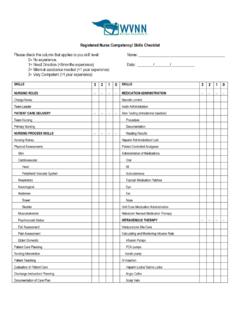Transcription of POROS CaptureSelect AAV Resins: AAV8, AAV9, AAVX
1 POROS CaptureSelect aav resins : aav8 , aav9 , AAVXPub. No. 100038399 Rev. EWARNING! Read the Safety Data Sheets (SDSs) andfollow the handling instructions. Wear appropriateprotective eyewear, clothing, and gloves. Safety Data Sheets(SDSs) are available from informationProduct descriptionPOROS CaptureSelect aav resins are 50 m, rigid, polymericaffinity chromatography resins designed for the purification ofnative and recombinant adeno associated virus subtypes withhigh purity. The resin backbone consists of crosslinkedpoly[styrene divinylbenzene] with a unique pore structureoptimized for rapid mass transport and chromatography. Theparticle surface is coated with a cross linked polyhydroxylatedpolymer. This coating is further derivatized with an affinity ligandwhich is a single domain monospecific antibody fragment.
2 Theseaffinity resins enable single step purification with high purity andyield at higher flow rates and improved resins at 2 8 C. Do not matrixCross-linked poly(styrene-divinylbenzene)Immobilized ligandSingle- domain [VHH] antibody fragmentSerotype affinity aav8 aav8 aav9 aav9 aavx AAV1 through aav9 , numerousrecombinant and chimeric serotypesBinding capacity>1013 14[1]Shipping solvent18% ethanolAverage particle size50 mRecommended flowrate 3-minute residence timeShrinkage/swelling<1% from 1 100% solventMechanical resistance100 bar (1,450 psi, 10 MPa)pH Range (all ligands)1 10 Ionic strength range0 to 5 M, all common saltsBuffer additivesAll common agents, including 4 M urea, 3 Mguanidine hydrochloride, ethylene glycol,and that may degrade the protein ligandare not recommended (for example, pH >10).
3 SolventsWater, 0 20% alcohol , acetonitrile, 1 2 Macetic acid (for example, acetic,hydrochloric, phosphoric) other commonorganic not expose the resin to strong oxidizers(such as hypochlorite), oxidizing acids (suchas nitric), strong reducing agents (such assulfite), acetone, or benzyl temperature2 C to 25 CDo not freeze[1]Binding capacity varies based on serotype, feedstream, additives, and mutations to parent serotypes. USER GUIDEFor Research Use or Further Manufacturing. Not for diagnostic use or direct administration in to humans and qualify the columnPacking guidelines Resins are supplied as approximately 56% slurry in18% ethanol. For column packing, exchange the shippingsolution with M sodium chloride. Resins are mechanically rigid and incompressible and can bepacked effectively in low pressure glass columns and inhigh pressure stainless steel columns .
4 The lack of wallsupport with increasing column diameter has minimalimpact on chromatography performance because the beadssupport themselves, allowing for flexible column packingapproaches and consistent and robust results. columns canbe packed with traditional flow pack, axial compression, orpack in place/stall pack packing methods. The packing factor is recommended to account for thedifference in bed volume between a gravity-settled bed M sodium chloride and a 1 to 3 bar pressure packed factor, along with the slurry ratio, is used to determinethe volume of slurry required to yield the intended finalcolumn volume (CV). Standard 10 23 m screens (frits) can be slurry: lab-scale columns ( 100 mL)Buffer-exchange using a m bottle-top filter orsintered glass the required volume of resin slurry to the top of abottle-top vacuum to remove the shipping the resin cake to the starting resin slurry volumewith the desired packing solution.
5 Mix with a plastic orrubber spatula. Do not grind the resin bed or tear the the vacuum and resuspension steps for a total of the exchanged resin to the original slurryconcentration, then proceed with column that the slurry concentration is 50 70% by sampling10 100 mL of slurry in a 10 100 mL graduated cylinder(respectively) and gravity settling for > 4 needed, adjust the slurry concentration to 50 70%.Prepare slurry: lab scale and larger scale columns (> 100 mL)Buffer-exchange using repeated gravity the resin to settle in the shipping container. Settlingrequires > 4 hours because the density of the resin isapproximately that of vessel diameter and depth increases, settling can requiremore time. Large vessels may need to settle overnight toensure good separation.
6 As vessel size increases, thesupernatant can be pumped decant the supernatant. Do not disturb the particles/turbidity may be present in the decant asbeads slough off the settled bed or come loose from thecarboy side walls. This is not the supernatant with the same volume of the desiredpacking the resin by gentle agitation by hand, resin wand,air sparging, paddle, flat bed shaker, top mounted impellermixer, or rotary mixer, then allow the resin to settle with any resin, do not use a magnetic stirrer. It can abradethe particles and cause fines to steps 1 to 4 two to three times to thoroughly exchangeinto the packing that the slurry concentration is 50 70% by sampling10 100 mL of slurry in a 10 100 mL graduated cylinder(respectively) and gravity settling for > 4 needed, adjust the slurry concentration to 50 70%.
7 Pack the columnFor larger columns , use a 3 or 4 way valve on the top and bottomof the column (if possible) to allow bypass of the column andavoid introducing air during packing and column use. Place acalibrated pressure gauge at the inlet of the you adjust the flow rate to form the bed, you may observesome turbidity in the eluent as packing starts. Turbidity will clearas packing proceeds and 1 2 bed volumes of packing buffer passthrough the the required slurry volume:Required slurry volume = target CV / slurry ratio x packingfactorExample for a 40 cmD 20 cmL 25 L column using slurrywith a 56% slurry ratio:25 L / = L slurry that the column outlet is closed and plumbed directlyto waste. Do not connect the column outlet to thechromatography system.
8 Plumbing into the system createsbackpressure that fights against the inlet pressure trying tosettle the bed and pack the CaptureSelect aav resins : aav8 , aav9 , aavx User that the column is level and locked in place beforestarting the the required slurry volume to the column by hand orwith a diaphragm pump, as dictated by your equipment andthe intended packing procedure. Use a squirt bottlecontaining packing solution to remove any residual resinfrom the column resin beads have a skeletal density similar to thedensity of water and do not settle rapidly. Do not allow theresin to gravity-settle in the column before the column inlet line connected to the system and thebottom outlet closed, bring the primed top flow adapter to1 2 cm from the slurry level, then tighten the O ring.
9 Do notpush the resin up and over the O ring. Change the top valveto force the air and liquid out the top of the adapter and towaste using the bypass line. Continue to lower the adapterslowly to remove the bubbles from the top of the column. Donot allow large air bubbles between the top adaptor and thetop of the resin the valve back to flow through the system on the top,then open the column the flow rate to the maximum or desired flow rateand pressure obtainable with the equipment used: Flow packing Pack at a flow rate at least 50% greaterthan the maximum operating flow rate for yourchromatography operation, with an approximate finalpacking pressure of 3 bar at the inlet of the column (notthe inlet of the system). This flow should yield apressure higher than the desired operating pressure forall column steps.
10 For smaller diameter columns ( 1 cm),we recommend higher packing flow rates of1000 2000 cm/hour. Flow packing with axial compression Place the topflow adaptor at a height that will accommodate all ofthe slurry. Pump the slurry into the column using theslurry nozzle and follow with M sodium chloride tochase the remaining resin or use extra slurry to avoidintroducing air into the at flow rates/pressures up to the limits of thecolumn. Pack at a flow rate at least 50% greater than themaximum operating flow rate for your chromatographyoperation. This flow should yield a pressure higher thanthe desired operating pressure for all column about 2 CVs, lower the top adapter until thepressure limit of the hydraulics. Pack the column to atleast bar. The top flow adaptor will stop when theresin bed is fully packed.
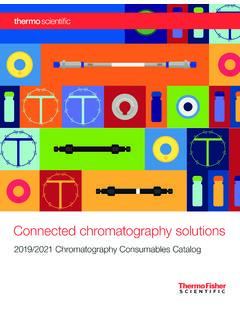
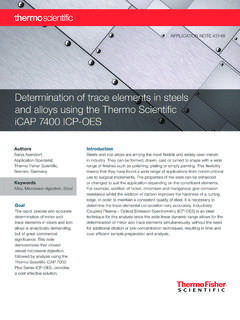
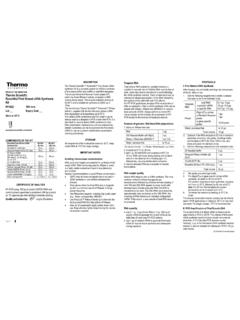
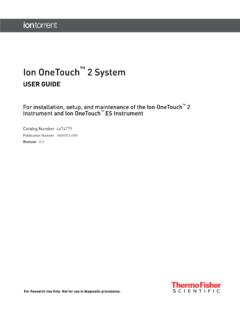
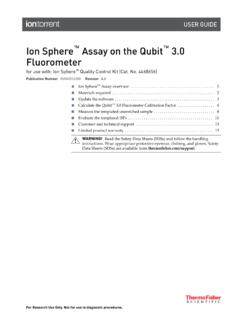
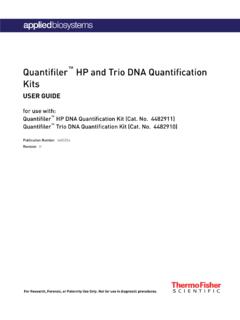
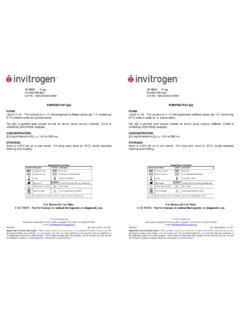
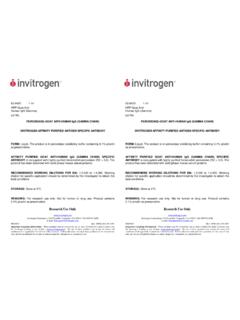
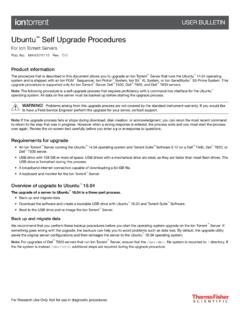
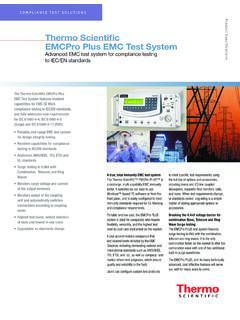
![INSTALL GUIDE CFL-AL(RS)-NI8-[ADS-ALCA]-EN](/cache/preview/1/e/a/3/6/8/b/a/thumb-1ea368bace86c3bface42af99f540d34.jpg)
